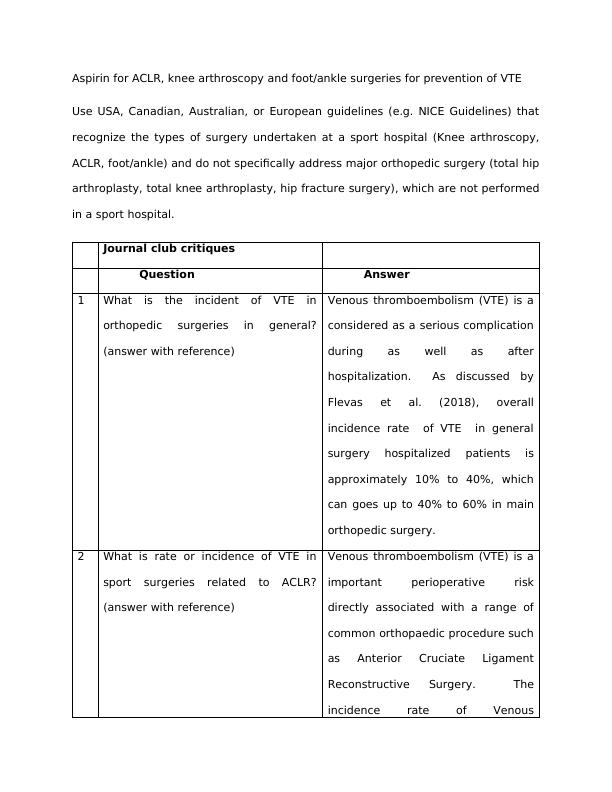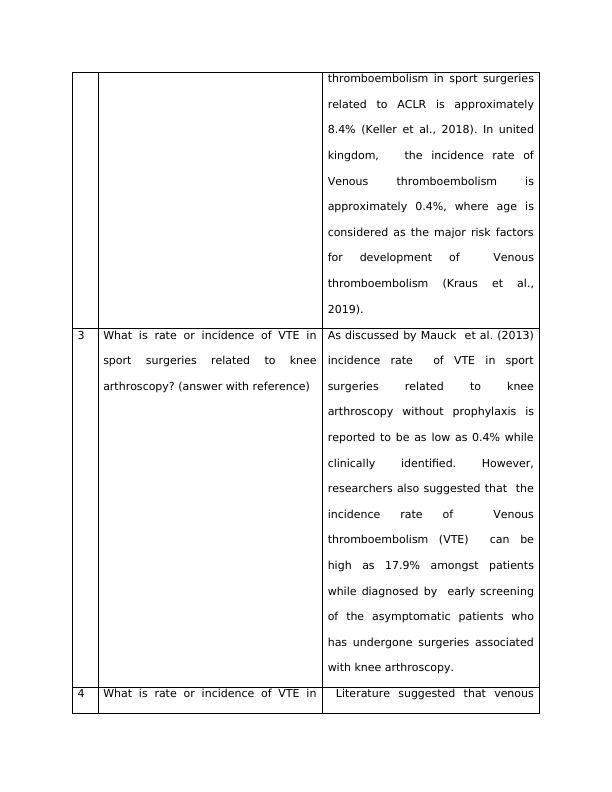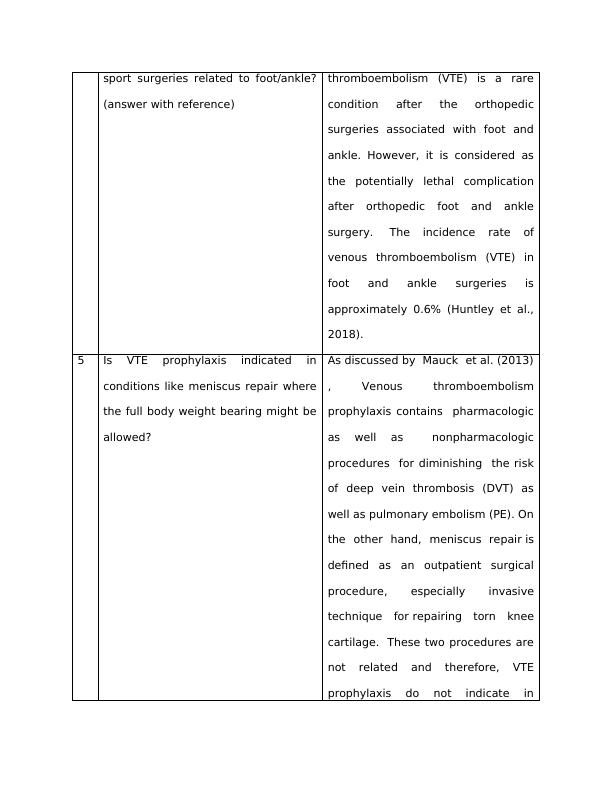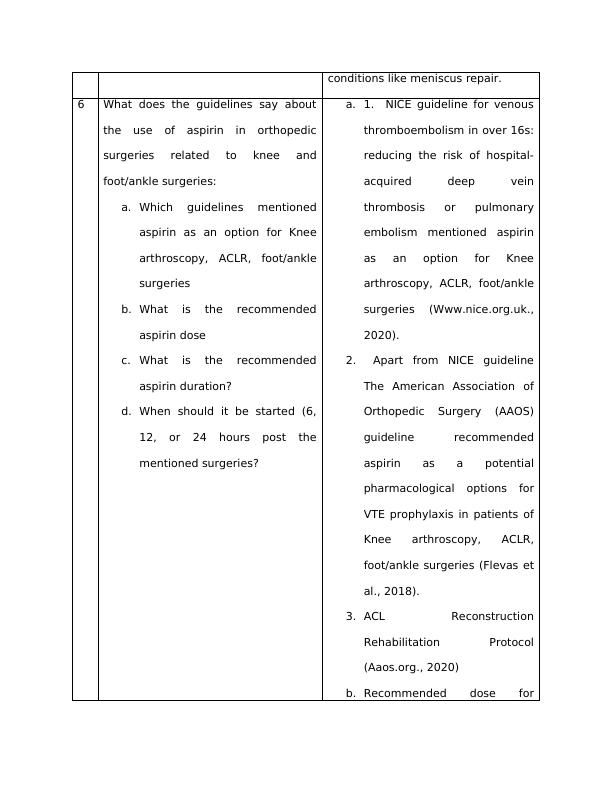Aspirin for ACLR, Knee Arthroscopy and Foot/Ankle Surgeries for Prevention of VTE
Analyzing the incidence and prophylaxis of VTE in orthopedic surgeries, specifically ACLR, knee arthroscopy, and foot/ankle surgeries, based on guidelines from USA, Canada, Australia, or Europe.
13 Pages2187 Words11 Views
Added on 2022-08-19
Aspirin for ACLR, Knee Arthroscopy and Foot/Ankle Surgeries for Prevention of VTE
Analyzing the incidence and prophylaxis of VTE in orthopedic surgeries, specifically ACLR, knee arthroscopy, and foot/ankle surgeries, based on guidelines from USA, Canada, Australia, or Europe.
Added on 2022-08-19
ShareRelated Documents
End of preview
Want to access all the pages? Upload your documents or become a member.
Assignment On RXMAN Hospital.
|20
|4073
|17




